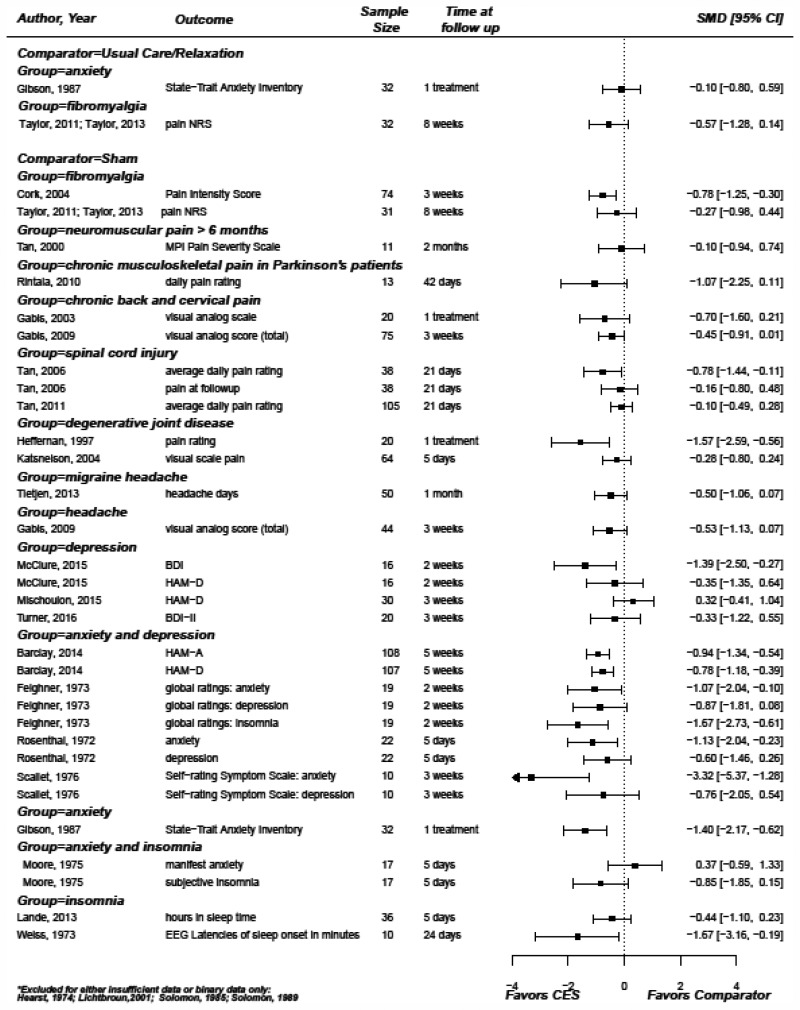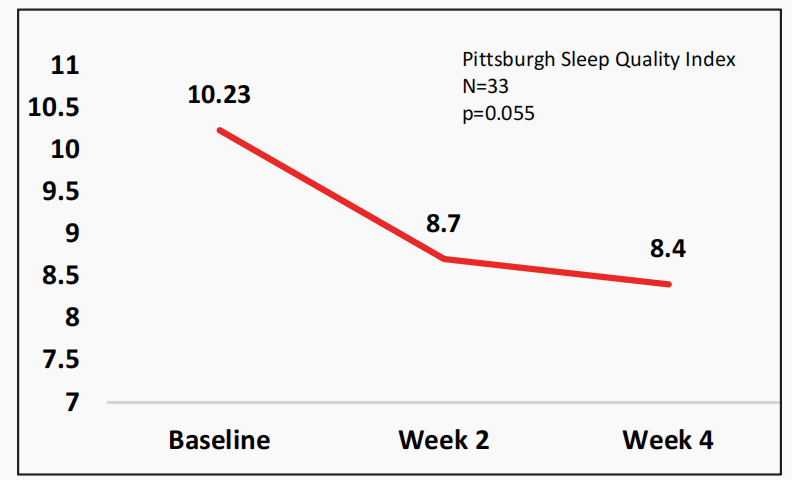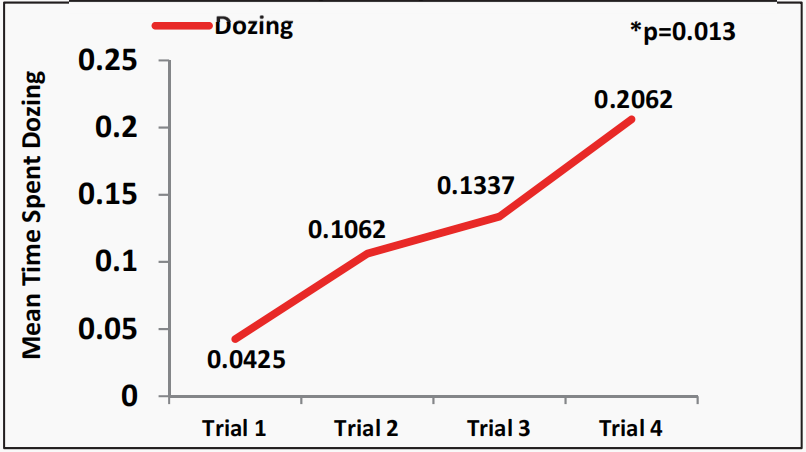
We identified 28 published articles describing 26 RCTs of cranial electrical stimulation for the target conditions. There were 14 RCTs of patients with painful conditions, 3 RCTs of patients with depression, 5 RCTs of patients with depression and anxiety, 2 RCTs of patients with insomnia, and one RCT each of patients with anxiety and insomnia and anxiety alone. There were no RCTs of patients with PTSD. These are presented in Figure.

Graphic Summary of Key Studies in Insomnia

Cranial electrotherapy stimulation for the management of depression, anxiety, sleep disturbance, and pain in patients: a preliminarystudy, Journal of Pain and Symptom Management. E‐published ahead of print, September, 2017.
All participants will complete CES treatment over the course of four weeks. Assessments will take place at baseline and at post-test four weeks later.
CES Therapy: Cranial Electrotherapy Stimulation (CES) may serve as an effective complimentary, noninvasive/nonpharmacological treatment for this Veteran population. CES is administered through a therapeutic device marketed and approved by the FDA to treat insomnia, depression, anxiety,and pain.

study of the effects of cranial electrical stimulation on activity in brain pain processing regions in individuals with insomniac.
1.Randomized clinical trials of cranial electrical stimulation for various conditions.There have been no serious adverse events from the use of CES. Minor symptoms,particularly tingling or skin irritation, are common (and are in fact one of the signs used to indicate current is being transmitted by the unit). However, the total number of
patients studied is small, and most RCTs of CES have not systematically reported adverse events.
2.In terms of efficacy, the potential benefit of CES improving sleep was encouraging but not decisive. This study did hint at the possibility of CES increasing total time slept.It seems reasonable to speculate that increasing the micro amperage, adjusting the frequency, time per session, or number of sessions might result in an even greater
improvement in sleep. From the clinical standpoint the best doing option would probably be an increase in the micro amperage or an adjustment in the frequency without a corresponding increase in the number or length of sessions. In any event, these unanswered questions might suggest that future research focus on
identifying the most effective dosing formula.
3.The COZING-IN01 device uses the CES process to work with the nervous system to get cell signals functioning normally. Your nervous system is the control center for your mood. Cells in the nervous system communicate throughout your body and brain,using chemical messengers, or neurotransmitters, like serotonin or dopamine.
4.Neurotransmitters can throw off how different parts of the brain process emotions and how you express them if they are out of balance and their receptors do not work correctly. As a result, mood disorders like depression
and anxiety can develop.Of note, the time that you need to benefit from COZING-IN01 devices will vary.Some people may have immediate relief, while others may need to use the device multiple times.